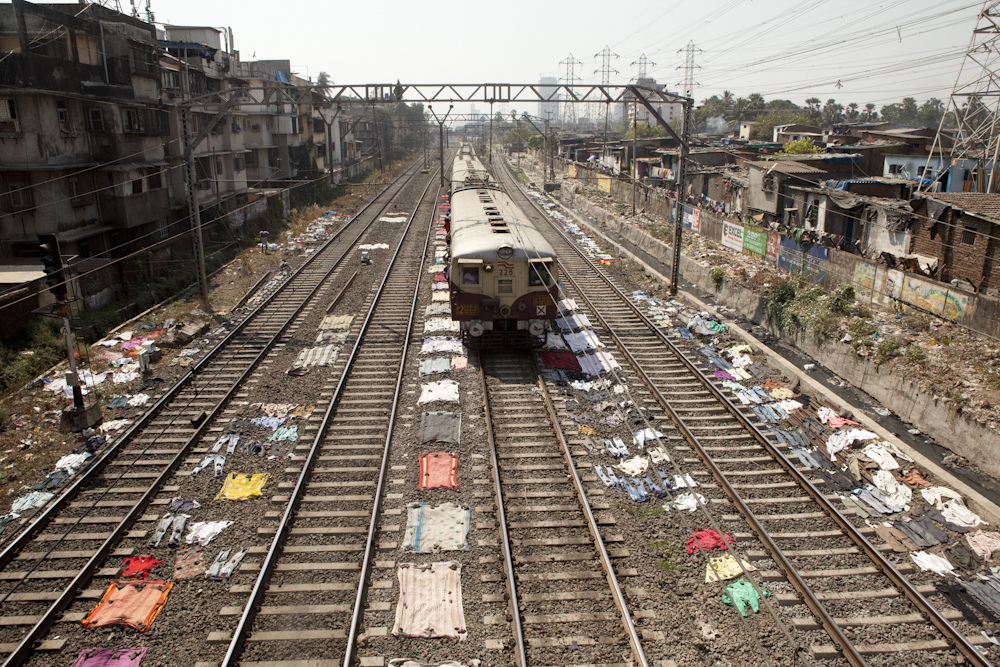Slums On Railway Land

On 13th December, 2015, the Indian Railways razed around 500 shanties in the Shakur Basti along the railway station in the West Delhi. The demolition drive occurred without any prior notice or information to the slum dwellers and evicted around 2,500 people in the cold months of December. Though the dwellers were furnished with blankets and food, the provision proved emphatically inadequate, when 25 year old Meera died on 22nd January, 2016. She had been living in a largely open hut since mid-December when her hut was bulldozed down by the Northern Railway authorities in the anti-encroachment drive. This incident brings to light the omnipresent problem of slums in India. According to the Census conducted in 2011, the total population living in slums is 6.55 crore in mere 1.3 crore households. The total urban population living in slums is an astounding 17.4% of all urban households. The most prominent reason for proliferation of slums in urban areas is migration. The Indian Constitution guarantees freedom of movement to its citizens, and accordingly people from rural India migrate to urban cities in search of a more stable and consistent personal income than what they can possibly acquire in their native places. Additionally, an urban centre offers increased social mobility and greater opportunities to the later generations of the migrants. This incessant migration leads to enlargement of slums, which coalesce and develop into an informal economy, contributing as much as 7.53% of the urban GDP, thus making a fairly large proportion of the entire GDP.
The recent eviction in Delhi was an anti-encroachment drive to remove the people residing illegally on Railway land. According to a press release by the Ministry of Railways, around 0.20% of the total Railway land was under encroachment as of April, 2015. Even though the encroachment is numerically less, the land which is encroached upon is of high commercial value and economic viability. In Delhi alone, the encroached land amounts to 59.88 hectares wherein more than 70 km of track length is encroached upon, posing hazardous conditions to the dwellers. The Shakur Basti was hindering a Rs. 110 crore project and was just one of the Railways’ projects which have been halted due to encroachments, which are in total worth Rs. 260 crore. The slums situated on the railway lands fall under the categorisation of non-notified slums by the Census 2011. Hence, the basic amenities required for sustenance of life like clean drinking water, electricity or even hygienic sanitation, are denied to them. The slum dwellers residing on railway land live in deplorable conditions characterised by diseases, malnutrition, high infant mortality and female infanticide rate. According to the Delhi Urban Shelter Improvement Board (DUSIB) as many as 22% of the slum dwellers don’t have access to a toilet and defecate in the open.
The need of the hour is for the Indian Railways to rehabilitate the slum dwellers so as to continue the halted projects and situate the dwellers in a better habitat with basic amenities available. Housing falls under the State subject in the Railways, hence every State supposedly has the onus for providing infrastructure and rehabilitating the evicted dwellers depending upon where the slum was located territorially. In 2006, Railway Land Development Authority (RLDA) was set up to prevent encroachment as well as to provide rehabilitation. One of the difficulties faced by the authorities is despite providing alternate living quarters, the dwellers are reluctant to move because their slums are located near their places of livelihood. Hence, moving to a different location would hinder their livelihood and further depreciate their economic conditions. In Brazil, for instance, the people whose livelihoods are intrinsically interlinked with the land they are occupying, the Brazilian Constitution provides for the right to inhabit unused land. However, in contrast, in India under the Public Premises (Eviction of Unauthorised Occupants) Act, 1971, the general public is precluded from occupying any public property. Accordingly, the railway authorities have interpreted this Act to mean that any unused land in their premises would be considered as a part of public property.
The Central as well as the State governments are required to issue guidelines and solutions keeping in mind the various complexities and nuances related to the issue. Essentially, the government should ensure that slums are not demolished without any alternate accommodation available. Further, the living places provided should be inhabitable with basic amenities like transportation to the city, clean drinking water and proper and hygienic sanitation available to the inhabitants. Additionally, housing schemes like Jawaharlal Nehru National Urban Renewal Mission (JNNURM) and Rajiv Awas Yojna (RAY) should be clarified to include slum areas as well. The slums located on the railway land must be accounted for in the various official surveys conducted by the Government and the Railway so that the slum dwellers benefit from them as well as live in inhabitable conditions.
(The writer is a student at NALSAR, Hyderabad).



